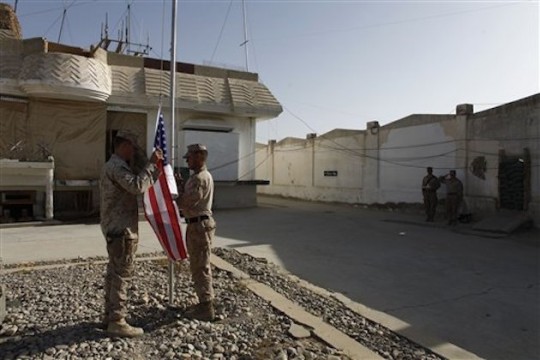Last Friday I ran a review of Bing West’s new book, One Million Steps, a compelling account of the struggles of a platoon of Marines fighting in Helmand Province, Afghanistan, in the winter of 2010-2011. After a great deal of bitter combat, the Marines West writes about—and those who replaced them in subsequent deployments—succeeded in bludgeoning the Taliban in Sangin District into a degree of submission. By 2012, rates of violence in the area had dropped, creating some space for the Afghan government to eventually take control of the area. Including the British troops who preceded the Marines in working to secure Sangin, coalition forces lost nearly 150 troops killed in action, more than anywhere else in Afghanistan.
So how are things going now?
Local Afghan officials say more than 200 police officers and soldiers have been killed during a fierce Taliban offensive in Helmand Province in southern Afghanistan that has lasted all summer and now threatens to overwhelm a key district.
Officials at the national level have played down the violence and even, in some cases, flatly denied that there is a problem. But local military, police and government officials, including two Afghan generals, have said in recent days that they are unsure their forces can continue to hold out against the offensive, which has been underway since June in the Sangin district in northern…unless they get more support from national authorities and international forces.
The Afghan National Army launched a counteroffensive in Sangin in July and August that pushed the insurgents away from the district capital, but in late August the Taliban renewed their attack. An Afghan Army general familiar with the situation in Sangin, speaking on the condition of anonymity because, he said, higher authorities did not want the seriousness of the situation publicized, said that the insurgents had launched 788 attacks in the past three months in Sangin and in two neighboring districts, Now Zad and Kajaki.
In all, the general said, 71 Afghan National Army soldiers have been killed and 214 wounded since June, while 159 police officers have been killed and 219 wounded in the Sangin district.
As the New York Times points out in their article, these Afghan casualty rates from the single summer of 2014 exceed the total coalition figures from 2007 to the present. And the problem is not just in Sangin:
The authorities are particularly worried about Musa Qala, a traditional Taliban stronghold and a source of revenue from the lucrative opium poppy trade.
"The situation is deteriorating and the Taliban are almost in the bazaar," the governor of Musa Qala district, Haji-Mohammad Sharif, said Friday night when reached by telephone in the government center in Musa Qala. "If the situation remains the same, the district will soon fall to the hands of the Taliban."
The bad guys are "almost in the Bazaar"—never an encouraging report. For those who have followed the situation in Afghanistan in recent years, this outcome is not surprising. The Afghan government forces, upon whose success the American strategy of transferring control of the country and bringing the war to a "responsible end" has depended, have never shown much promise, to say the least.
The New York Times coverage of these issues, while dispiriting, is a welcome exception to what seems to be a general rule in the American media to ignore the fact that we are still fighting a war in Afghanistan, with tens of thousands of troops still deployed in the country. The war is not coming to a "responsible end." We are leaving. And the Taliban is coming back.
